Curriculum Information
0. Checklist
1. Wordlist
2. Computational Thinking
AC V9.0 · define and decompose real-world problems with design criteria and by creating user stories (AC9TDI8P04)
NSW DT(Tech Mand): TM: · define and decompose real-world problems, taking into account functional requirements and a range of constraints, eg economic, environmental, social, technical and usability (ACTDIP027)
AC V9.0 Apply computational thinking by defining and decomposing real-world problems, creating user experiences, designing and modifying algorithms…
AC V9.0 (Recap 5-6): – designing an algorithm…
3. Making Hamburgers
NSW DT(Tech Mand): TM: LS – · identify sequences for everyday actions, for example: ST
NSW DT(Tech Mand): TM: LS – – cooking a meal
NSW DT(Tech Mand): TM: LS – – routines, such as getting ready for work
4. Problem Solving
AC V9.0 (Recap 5-6): Practise different strategies to develop their abstract thinking, such as thinking out aloud to simplify problems, which is needed when defining them.
AC V9.0 Practising problem decomposition, using approaches such as divide and conquer to more clearly understand a problem by describing its component parts.
5. Meal Planning
AC V9.0 – framing a problem in terms of what we know, why it is important and the outcome we want, for example matching the items in your fridge to possible recipes to reduce food waste
AC V9.0 – using a template such as As a , I want so that , for example As a user with a visual impairment I want to be able to get the news on my smartphone so that I can keep up with my world
AC V9.0 – asking a series of questions and sub-questions to understand the problem and breaking it down into manageable parts, for example How do we keep track of what items are in the pantry? Are there any dietary requirements that need to be considered?
6. Flowcharts
AC V9.0 Represent and communicate their algorithmic solutions using flowcharts and pseudocode.
NSW DT(Tech Mand): TM: LS – · follow and represent a sequence of steps and decisions (algorithm) to solve a simple problem, for example: CT
NSW DT(Tech Mand): TM: LS – – write a series of prompts to explain how to change a password
NSW DT(Tech Mand): TM: › follows simple algorithms in a range of contexts TELS-5DP
7. Branching
AC V9.0 (Recap 5-6): Represent algorithms involving branching and iteration and implement them as visual programs that include variables and respond to input.
NSW DT(Tech Mand): TM: · design algorithms that use a range of data types, branching and iteration and represent them diagrammatically and in English (ACTDIP029) CT DT
AC V9.0 (Recap 5-6): · design algorithms involving multiple alternatives (branching) and iteration (AC9TDI6P02)
NSW DT(Tech Mand): TM: LS – – draw a flowchart using a yes/no pathway
AC V9.0 (Recap 5-6): – modelling a decision that has more than 2 options to select the next step, for example selecting transport IF distance is less than 2 km THEN walk, ELSE IF the distance is less than 5 km THEN ride a bike, ELSE catch the bus
AC V9.0 – describing algorithms with nested control structures, including a nested if, for example IF it is raining THEN [IF parents are home THEN drive to school]; or an IF inside a loop, for example REPEAT [select the largest coin smaller than the remaining total, and subtract it] UNTIL the remainder is zero
8. Iteration
AC V9.0 (Recap 5-6): Process data and show how digital systems represent data, design algorithms involving complex branching and iteration, and implement them as visual programs including variables.
NSW Comp Tech (2024) – CT-Net: ¤ applies iterative processes to define problems and plan, design, develop and evaluate computing solutions CT5-DPM-01:
AC V9.0 (Recap 5-6): – creating the steps, decisions and loops in algorithms and knowing what step they are up to, for example repeating the steps to add 2 digits for each column in multi-digit addition, knowing which column they are adding and when to stop
AC V9.0 (Recap 5-6): – planning algorithms that repeat until a condition is met, for example keep mixing UNTIL the ingredients are combined or subtracting a number UNTIL the result reaches zero
AC V9.0 · design algorithms involving nested control structures and represent them using flowcharts and pseudocode (AC9TDI8P05)
9. Scratch Programming
NSW DT(Tech Mand): TM: LS – – putting visual programming blocks together to develop elements of an interactive story
10. Pseudocode
AC V9.0 – describing algorithms precisely in pseudocode (structured English) or with flowcharts for each part of the problem, for example using separate flowcharts to describe the purchase of an item and the giving of change during the purchase
11. Calculating Change
AC V9.0 – designing an algorithm or modifying an existing algorithm to fix an error or change functionality, for example calculating the coins and notes needed for an amount of money and changing the algorithm to handle new denominations
12. Robot Mazes
AC V9.0 (Recap 5-6): – constructing more than one sequence of steps that solve the same problem and explaining why one is better than the other, for example specifying the exact route through a maze versus using the right-hand rule that works for all mazesNSW DT(Tech Mand): TM: LS – · participate in producing a digital solution using algorithms, for example: CT
NSW DT(Tech Mand): TM: LS – – guiding a robot
13. Introducing Python
AC V9.0 Design and trace algorithms; and implement them in a general-purpose programming language.
NSW DT(Tech Mand): TM: · implement and modify programs involving branching, iteration and functions in a general-purpose programming language, for example: (ACTDIP030) CT
NSW DT(Tech Mand): TM: – microcontroller
NSW DT(Tech Mand): TM: – robotics
NSW DT(Tech Mand): TM: – app development
14. Errors and Tracing
AC V9.0 · trace algorithms to predict output for a given input and to identify errors (AC9TDI8P06)
NSW DT(Tech Mand): TM: · trace algorithms to predict output for a given input and to identify errors (ACTDIP029)
AC V9.0 – following an algorithm precisely to confirm it produces the expected output for the given input, for example desk check with a table of input, variables and output
AC V9.0 – following instructions for making woven baskets or nets by hand, as done by First Nations Australians, and making predictions of how the instructions would need to be modified to enable the item to be produced through automated manufacturing processes
15. Evaluating solutions
AC V9.0 Check their solutions meet the specifications by testing and debugging their algorithms before and during implementation.
16. Your Age
By Curriculum
Australian Curriculum V9.0 (2024)
AC V9.0 (7-8): · define and decompose real-world problems with design criteria and by creating user stories (AC9TDI8P04)
AC V9.0 (7-8): Apply computational thinking by defining and decomposing real-world problems, creating user experiences, designing and modifying algorithms…
AC V9.0 (Recap 5-6): – designing an algorithm…
AC V9.0 (Recap 5-6): Practise different strategies to develop their abstract thinking, such as thinking out aloud to simplify problems, which is needed when defining them.
AC V9.0 (7-8): Practising problem decomposition, using approaches such as divide and conquer to more clearly understand a problem by describing its component parts.
AC V9.0 (7-8): – framing a problem in terms of what we know, why it is important and the outcome we want, for example matching the items in your fridge to possible recipes to reduce food waste
AC V9.0 (7-8): – using a template such as As a , I want so that , for example As a user with a visual impairment I want to be able to get the news on my smartphone so that I can keep up with my world
AC V9.0 (7-8): – asking a series of questions and sub-questions to understand the problem and breaking it down into manageable parts, for example How do we keep track of what items are in the pantry? Are there any dietary requirements that need to be considered?
AC V9.0 (7-8): Represent and communicate their algorithmic solutions using flowcharts and pseudocode.
AC V9.0 (Recap 5-6): Represent algorithms involving branching and iteration and implement them as visual programs that include variables and respond to input.
AC V9.0 (Recap 5-6): · design algorithms involving multiple alternatives (branching) and iteration (AC9TDI6P02)
AC V9.0 (Recap 5-6): – modelling a decision that has more than 2 options to select the next step, for example selecting transport IF distance is less than 2 km THEN walk, ELSE IF the distance is less than 5 km THEN ride a bike, ELSE catch the bus
AC V9.0 (7-8): – describing algorithms with nested control structures, including a nested if, for example IF it is raining THEN [IF parents are home THEN drive to school]; or an IF inside a loop, for example REPEAT [select the largest coin smaller than the remaining total, and subtract it] UNTIL the remainder is zero
AC V9.0 (Recap 5-6): Process data and show how digital systems represent data, design algorithms involving complex branching and iteration, and implement them as visual programs including variables.
AC V9.0 (Recap 5-6): – creating the steps, decisions and loops in algorithms and knowing what step they are up to, for example repeating the steps to add 2 digits for each column in multi-digit addition, knowing which column they are adding and when to stop
AC V9.0 (Recap 5-6): – planning algorithms that repeat until a condition is met, for example keep mixing UNTIL the ingredients are combined or subtracting a number UNTIL the result reaches zero
AC V9.0 (7-8): · design algorithms involving nested control structures and represent them using flowcharts and pseudocode (AC9TDI8P05)
AC V9.0 (7-8): – describing algorithms precisely in pseudocode (structured English) or with flowcharts for each part of the problem, for example using separate flowcharts to describe the purchase of an item and the giving of change during the purchase
AC V9.0 (7-8): – designing an algorithm or modifying an existing algorithm to fix an error or change functionality, for example calculating the coins and notes needed for an amount of money and changing the algorithm to handle new denominations
AC V9.0 (Recap 5-6): – constructing more than one sequence of steps that solve the same problem and explaining why one is better than the other, for example specifying the exact route through a maze versus using the right-hand rule that works for all mazes
AC V9.0 (7-8): Design and trace algorithms; and implement them in a general-purpose programming language.
AC V9.0 (7-8): · trace algorithms to predict output for a given input and to identify errors (AC9TDI8P06)
AC V9.0 (7-8): – following an algorithm precisely to confirm it produces the expected output for the given input, for example desk check with a table of input, variables and output
AC V9.0 (7-8): – following instructions for making woven baskets or nets by hand, as done by First Nations Australians, and making predictions of how the instructions would need to be modified to enable the item to be produced through automated manufacturing processes
AC V9.0 (7-8): Check their solutions meet the specifications by testing and debugging their algorithms before and during implementation.
AC V9.0 (7-8): Apply computational thinking by defining and decomposing real-world problems, creating user experiences, designing and modifying algorithms, and implementing them in a general-purpose programming language.
AC V9.0 (7-8): Apply computational thinking by defining and decomposing real-world problems, creating user experiences, designing and modifying algorithms, and implementing them in a general-purpose programming language.
AC V9.0 (7-8): – specifying test cases and comparing the expected and actual output to determine the correctness of an algorithm, for example a test case of the change-calculating algorithm could have input $1.45 and expected output 1 x $1, 2 x 20c and 1 x 5c coins
NSW Digital Technologies (Tech Mandatory)
NSW DT(Tech Mand): TM: · define and decompose real-world problems, taking into account functional requirements and a range of constraints, eg economic, environmental, social, technical and usability (ACTDIP027)
NSW DT(Tech Mand): TM: LS – · identify sequences for everyday actions, for example: ST
NSW DT(Tech Mand): TM: LS – – cooking a meal
NSW DT(Tech Mand): TM: LS – – routines, such as getting ready for work
NSW DT(Tech Mand): TM: LS – · follow and represent a sequence of steps and decisions (algorithm) to solve a simple problem, for example: CT
NSW DT(Tech Mand): TM: LS – – write a series of prompts to explain how to change a password
NSW DT(Tech Mand): TM: › follows simple algorithms in a range of contexts TELS-5DP
NSW DT(Tech Mand): TM: · design algorithms that use a range of data types, branching and iteration and represent them diagrammatically and in English (ACTDIP029) CT DT
NSW DT(Tech Mand): TM: LS – – draw a flowchart using a yes/no pathway
NSW DT(Tech Mand): TM: LS – – putting visual programming blocks together to develop elements of an interactive story
NSW DT(Tech Mand): TM: LS – · participate in producing a digital solution using algorithms, for example: CT
NSW DT(Tech Mand): TM: LS – – guiding a robot
NSW DT(Tech Mand): TM: · implement and modify programs involving branching, iteration and functions in a general-purpose programming language, for example: (ACTDIP030) CT
NSW DT(Tech Mand): TM: – microcontroller
NSW DT(Tech Mand): TM: – robotics
NSW DT(Tech Mand): TM: – app development
NSW DT(Tech Mand): TM: · trace algorithms to predict output for a given input and to identify errors (ACTDIP029)
NSW Computing Technology (2024)
NSW Comp Tech (2024) – CT-Net: ¤ applies iterative processes to define problems and plan, design, develop and evaluate computing solutions CT5-DPM-01:
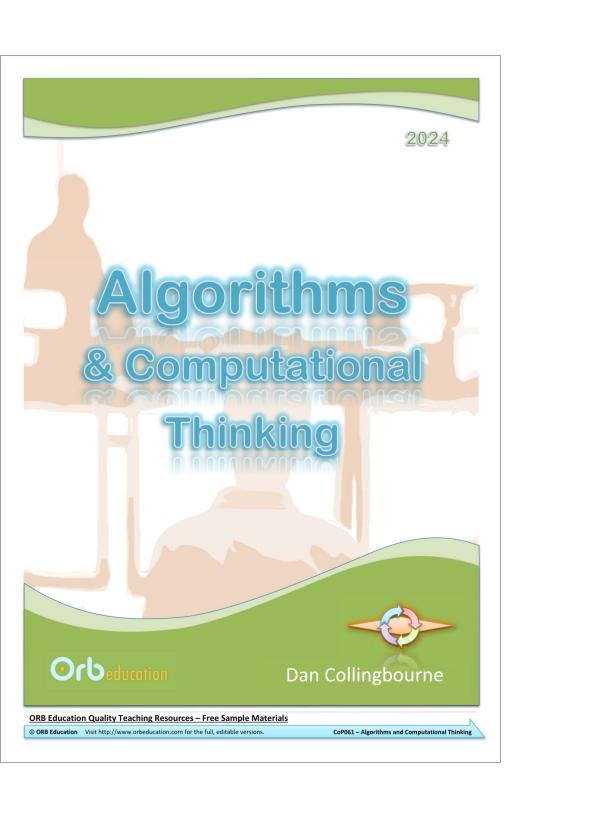
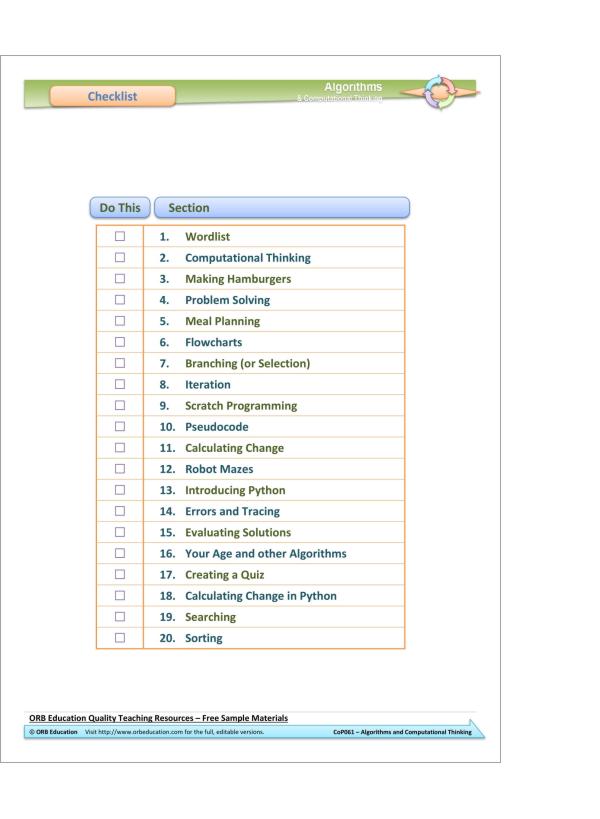
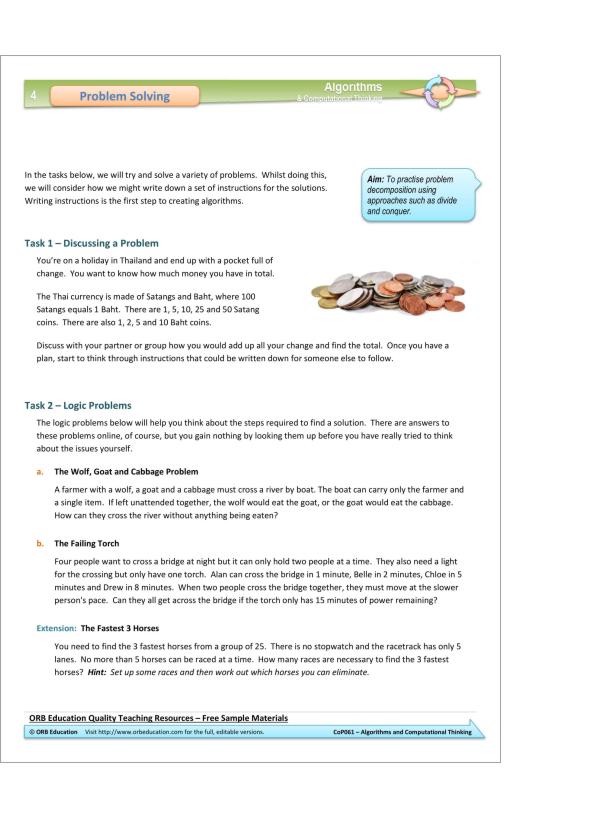
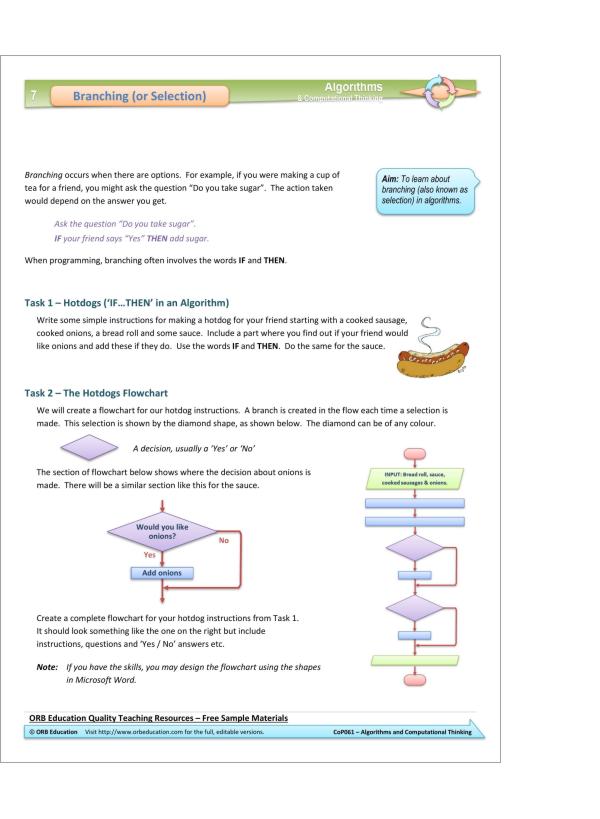

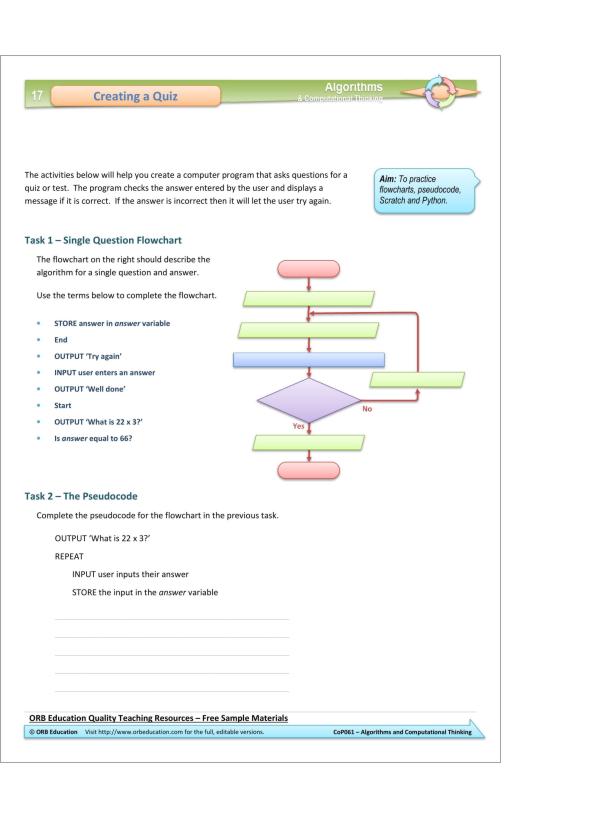
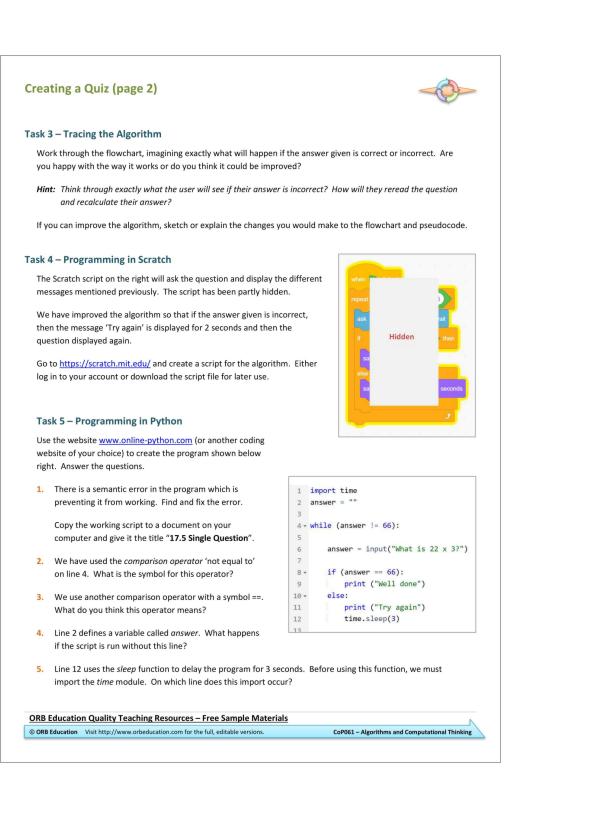
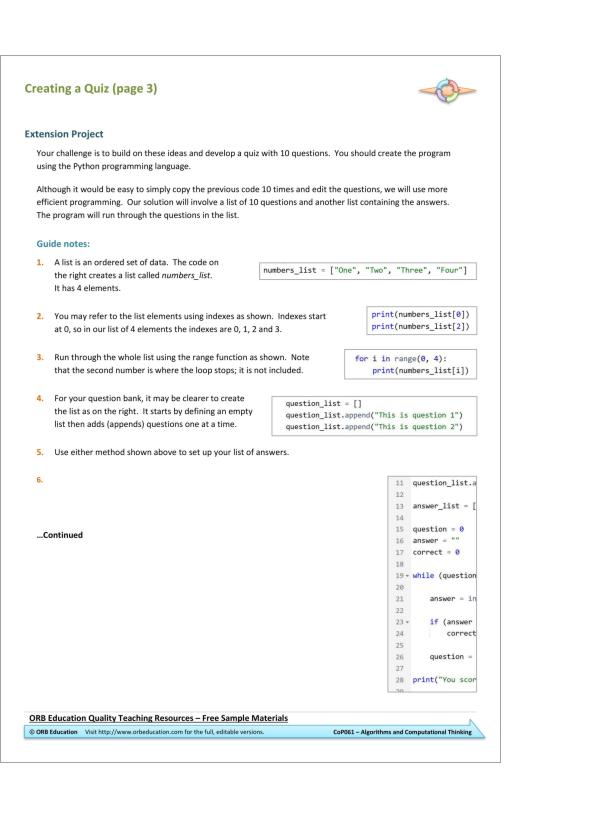
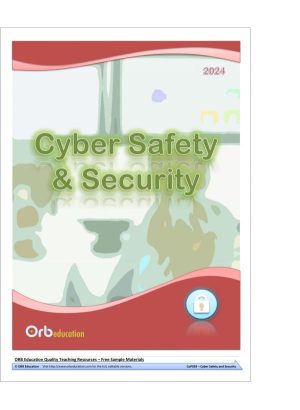
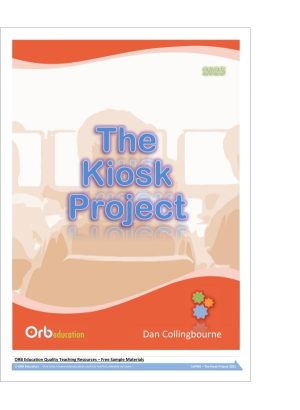
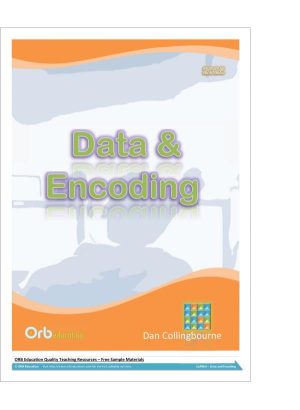
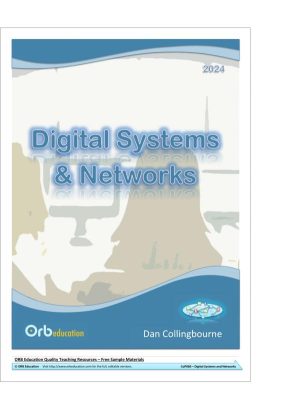
Reviews
There are no reviews yet.